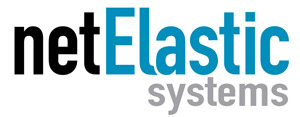Broadband providers are supporting a growing number of subscribers. And more subscribers mean more bandwidth consumption. This is fueling the growth of software-based vBNGs, which provide greater scalability and flexibility than hardware-based BNGs. That being said, how do you get visibility into your vBNGs?
Visibility and Control with vBNGs
netElastic introduced one of the first software-based BNGs and has been a leader ever since. With netElastic vBNG, most network engineers use our CLI to do the initial configurations. Our CLI matches Cisco and Juniper styles, so it’s very familiar to most network personnel.
Once it’s deployed and running in production, broadband providers need an easy way to monitor and manage their vBNG routers. With traditional routers, engineers use SNMP monitoring tools to graph load and monitor key resource elements.
netElastic also supports this. But just monitoring a small number of elements, such as “interface bandwidth,” doesn’t show the whole picture. Broadband providers need more.
Another challenge when managing an access network is being able to resolve customer issues quickly. For example, What if a customer can’t connect? What if customers aren’t receiving the service quality they should?
A Solution
Based on customer feedback, netElastic introduced a user-friendly, web-based management application for vBNG. netElastic Router Manager is a single-pane-of-glass, web-based GUI to manage all netElastic routers.
Router Manager enables broadband providers to quickly configure their vBNGs and monitor how the network and vBNG are performing. It collects, monitors, and trends important operational network information about the router. And brings it all together in an easy to use platform, increasing your vBNG visibility and control.
However, Router Manager isn’t limited to only vBNG. It supports all netElastic routing solutions, including:
Router Manager provides visibility into interface and sub-interface bandwidth usage with trending in hours, days, weeks, and months (up to a full year). This is great for capacity planning, since you can see the lows and highs in bandwidth utilization over time. Planning for potential network upgrades becomes easier with these valuable insights.
In addition, alerts can be set with specific threshold levels. When threshold levels are exceeded, Router Manager will alert network personnel so they can drill into the data, troubleshoot, and develop a solution.
Features and Benefits

- Increased operational visibility – Router Manager provides detailed monitoring and visibility to all aspects of the router and subscriber network activities.
- Bandwidth usage over time is shown down to the individual subscriber level, including trended bandwidth, detailed subscriber access information, interface, and routing, and performance metrics.
- Comprehensive debug console enables troubleshooting of access and network events in real time, including authentication, authorization, and session state events.
- An intuitive service configuration workflow enables complex service provisioning without the need for a networking expert.
- Ability to search subscribers by multiple criteria, including user name, access interface, and QoS profiles.
Best of all, Router Manager is a fraction of the cost of 3rd party monitoring tools. It’s also less expensive than do-it-yourself monitoring tools used with most hardware-based routers.
Router Manager also provides role-based access control (RBAC). This ensures first-level support staff has detailed access to subscriber connection details, while restricting their access to more sensitive information.
Language Support
netElastic just launched its first international language support option for Router Manager. Our first non-English speaking language is Portuguese, which will help our many customers in Portugal and Brazil. Our next international language will be Spanish, which we will release shortly.
Which Employees will Benefit Most from Router Manager?

The good news is multiple departments and individuals will benefit from Router Manager.
Support staff appreciate Router Manager since it provides detailed subscriber connection and network information directly from the router. This allows them to quickly identify and resolve customer issues.
NOC Operators like it because it gives them full visibility to the health and status of the network from a single application. And it alerts them when something needs attention, before it affects the customer experience.
Another group that benefits is network engineers. By providing operations/support staff with greater visibility and control, engineers can focus on more critical activities.
However, even some network engineers find it helpful to have a GUI to add supplemental configurations. Router Manager allows engineers to do almost everything possible from the command line, such as creating and modifying QoS profiles, ACLs, static routes, IP pools, RADIUS integrations, and creating authentication and authorization groups.
Chief Executive Officers (CEOs) have also been impressed. Nigel Rayneau, CEO of Ufone, states “Router Manager provides detailed customer information that has improved and simplified our customer issue troubleshooting, which has resulted in a better customer experience and lower support costs. Troubleshooting with Router Manager has been exceptional and has given us insights to telemetry data which otherwise would have been unavailable.”
If you’d like to learn more about netElastic Router Manager, please contact us today.

